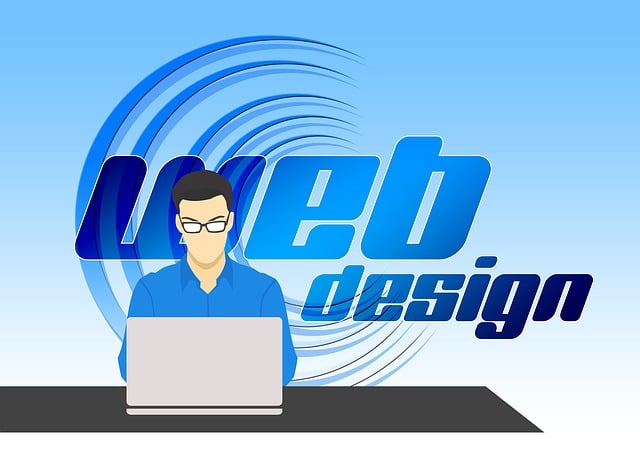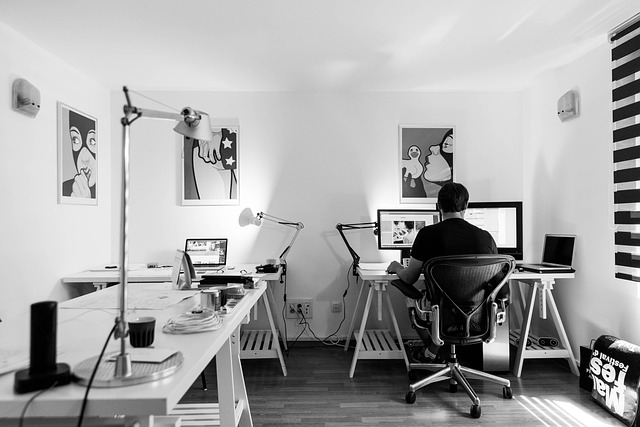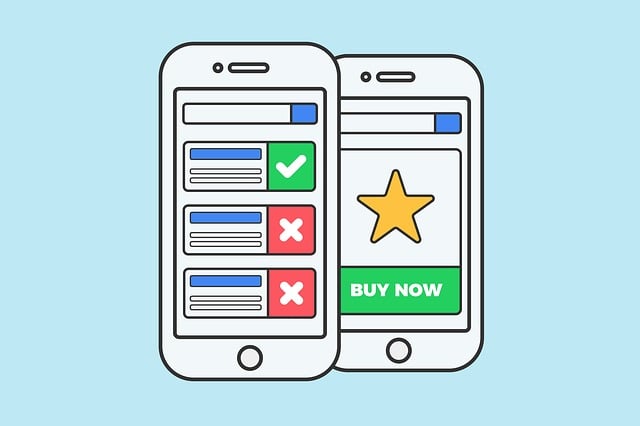In today's digital landscape, establishing a strong online presence is vital for businesses, particularly Small and Medium Enterprises (SMEs) facing budget constraints. Affordable web design offers a viable solution by delivering professional websites without breaking the bank. By balancing functionality, clean aesthetics, and user-friendliness, this strategy enables SMEs to compete online while managing financial resources efficiently. Key aspects include defining project scope, leveraging open-source tools and templates, effective communication, content prioritization, strategic planning, and selecting robust yet cost-effective CMS platforms like WordPress. Businesses also face a critical decision between outsourcing or forming in-house web design teams, each with its advantages and cost implications. Additionally, adopting simplicity and minimalism in design, combined with sound SEO strategies, can reduce long-term costs. Measuring success through goal-setting, KPI tracking, and ROI analysis ensures the affordability and effectiveness of the web design solution.
In today’s digital landscape, having a robust online presence is crucial for modern businesses. However, many face challenges due to tight budgets. This article explores budget-friendly web design, a solution allowing enterprises of all sizes to establish and enhance their digital footprint without breaking the bank. We’ll delve into key strategies, from platform selection and cost-saving development tactics to design tips and SEO optimization, empowering businesses to create high-quality, affordable websites that drive real results.
Understanding Budget-Friendly Web Design: A Need for Modern Businesses

In today’s digital landscape, having a strong online presence is no longer an option but a necessity for modern businesses. However, many small and medium-sized enterprises (SMEs) often find themselves constrained by tight budgets when it comes to creating or revamping their websites. This is where budget-friendly web design steps in as a game-changer. It’s about offering professional, high-quality website solutions without breaking the bank. By prioritizing functionality, clean aesthetics, and user-friendliness, affordable web design ensures that businesses can compete effectively online while staying within financial limits.
Budget-friendly doesn’t mean sacrificing quality or usability. With strategic planning and innovative techniques, designers can create stunning websites that effectively communicate a brand’s message, engage visitors, and drive conversions. This approach is particularly beneficial for startups and established SMEs looking to expand their reach without investing heavily in web development. By choosing affordable options, businesses can allocate resources to other critical areas of their operations while still benefiting from a well-crafted online presence.
Key Considerations for Keeping Costs Down Without Sacrificing Quality

When exploring budget-friendly web design, it’s crucial to strike a balance between cost-effectiveness and quality. Key considerations include clearly defining your project scope and goals upfront to avoid unnecessary expenses. Prioritize essential features and functionalities based on user needs and business objectives, omitting non-essential elements that may inflate costs. This strategic approach ensures you get the most value for your investment without compromising aesthetics or usability.
Additionally, leveraging open-source tools, templates, and pre-built components can significantly reduce design and development costs. Collaborating with freelance designers or agencies offering competitive rates is another smart strategy. Regular communication and clear project management ensure you stay within budget while maintaining quality standards. Remember that an affordable web design should enhance your brand image and user experience, not compromise them.
The Role of Content and Functionality in Affordable Web Development

In the realm of budget-friendly web design, content and functionality are the cornerstones that define a website’s success. When crafting an affordable web design, the focus should be on creating a user-centric experience that delivers value while keeping costs low. This involves strategic planning to ensure every element on the page serves a purpose, from eye-catching visuals to compelling copy. Well-structured content that aligns with clear objectives not only engages visitors but also optimizes search engine rankings, making it an affordable yet powerful tool for online success.
Functionality in affordable web design means employing solutions that are both cost-effective and efficient. This includes leveraging user-friendly content management systems (CMS) to simplify updates, integrating responsive design for seamless viewing across devices, and prioritizing fast loading times. By combining these strategies with a content strategy that speaks to the target audience, developers can deliver robust yet affordable websites that offer an exceptional user experience without breaking the bank.
Choosing the Right Platform: CMS Options for Cost-Effective Websites

When creating an affordable web design, selecting the right platform is a pivotal step. Content Management Systems (CMS) offer a cost-effective way to build and manage websites without breaking the bank. Popular options like WordPress, Joomla, and Drupal provide robust tools and extensive templates, allowing users to create professional-looking sites with minimal investment in design or development. These platforms are not only user-friendly but also boast large online communities that offer support and resources for customization.
Among CMS options, WordPress stands out due to its simplicity, versatility, and vast library of free and premium themes. Its drag-and-drop page builders make it easy to create custom layouts without requiring coding skills. Additionally, a wealth of plugins extend WordPress’ functionality, from SEO optimization to e-commerce capabilities, further enhancing its value for those seeking an affordable web design solution.
Outsourcing vs. In-House: Pros and Cons of Each Approach

When considering budget-friendly web design, one key decision is whether to outsource or establish an in-house team. Outsourcing has become a popular choice for many businesses due to its cost-effectiveness. By hiring external agencies or freelancers, companies can access a diverse range of skills and expertise at a fraction of the cost of full-time employees. This approach offers flexibility; you can scale your design efforts up or down based on project demands and avoid overhead expenses like office space and benefits.
However, in-house web design has its advantages too. Maintaining control over the creative process and direct communication with designers can lead to more personalized results. In-house teams also ensure consistent branding and faster response times since they are readily available. While initially more expensive, this option may save costs in the long run by eliminating external project management fees and fostering a deeper understanding of your brand within the team.
Design Tips to Achieve an Attractive, Modern Look on a Limited Budget

Achieving an attractive and modern look for your website doesn’t have to break the bank. One of the key aspects of budget-friendly web design is simplicity. Opting for a clean, uncluttered layout with ample white space can instantly make your site appear sleek and contemporary. Minimalist designs are not only visually appealing but also enhance user experience by making content easy to scan and digest.
Color choices play a significant role in creating an engaging yet cost-effective design. Neutral palettes with hints of vibrant accents can add interest without increasing costs. Using readily available stock images or creating your own simple illustrations can also reduce expenses compared to licensing high-end visuals. Remember, less is often more, and these strategies will help you craft an affordable web design that doesn’t compromise on aesthetics.
SEO Strategies That Support Long-Term Cost Savings

In the realm of budget-friendly web design, implementing effective SEO strategies is a game-changer that can lead to long-term cost savings. By optimizing your website for search engines from the outset, you attract organic traffic, reducing the reliance on costly paid advertising campaigns. Affordable web design doesn’t mean sacrificing online visibility; instead, it’s about utilizing proven techniques to boost your site’s ranking and make it more discoverable to your target audience.
One of the key strategies is keyword research and integration. Identifying relevant keywords and incorporating them naturally into your content, titles, and meta descriptions enhances your website’s relevance in search results. Additionally, focusing on creating high-quality, engaging content that provides real value to visitors not only improves user experience but also encourages longer stays on your site, a factor search engines consider when ranking pages. This holistic approach ensures that your affordable web design is not just visually appealing but also search engine-friendly, setting the foundation for sustained online success and cost savings over time.
Measuring Success: Evaluating the Return on Investment in Your Web Design

Measuring success is a vital aspect of evaluating the return on investment (ROI) in your web design, especially when opting for an affordable web design solution. This involves setting clear goals and tracking key performance indicators (KPIs). For instance, if your primary objective is to increase online sales, monitor metrics such as conversion rates, average order value, and total revenue generated through the website. Tools like Google Analytics can provide valuable insights into user behaviour, helping you understand which design elements drive conversions and which areas need improvement.
Additionally, consider tracking customer acquisition costs (CAC) to assess the effectiveness of your marketing efforts and overall web design strategy. By dividing your total investment by the number of new customers acquired, you can calculate the CAC and gauge how well your affordable web design has performed in attracting and retaining valuable customers. Regularly reviewing these metrics allows you to make data-driven decisions, optimize your website, and continually enhance user experience, ultimately maximizing your ROI.
